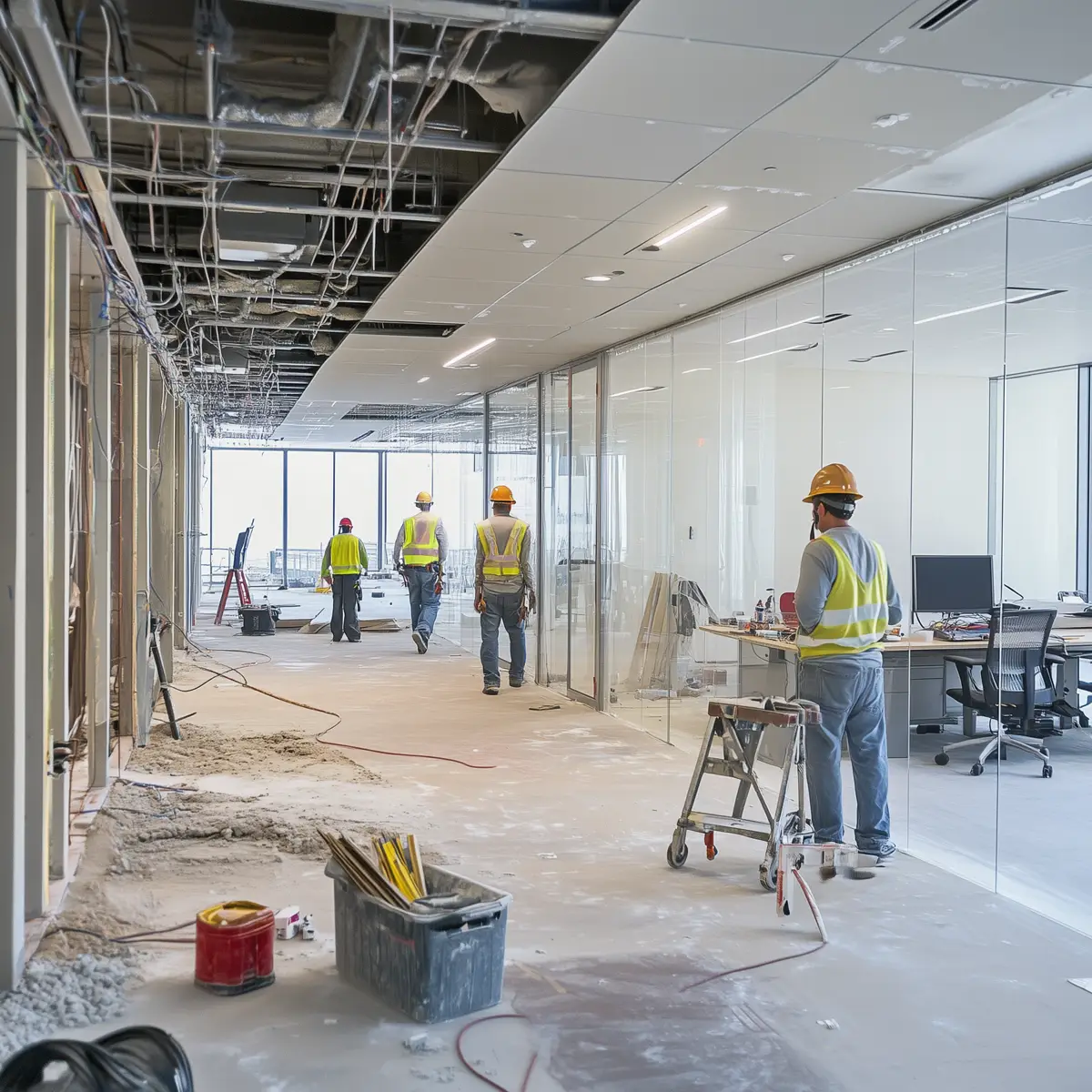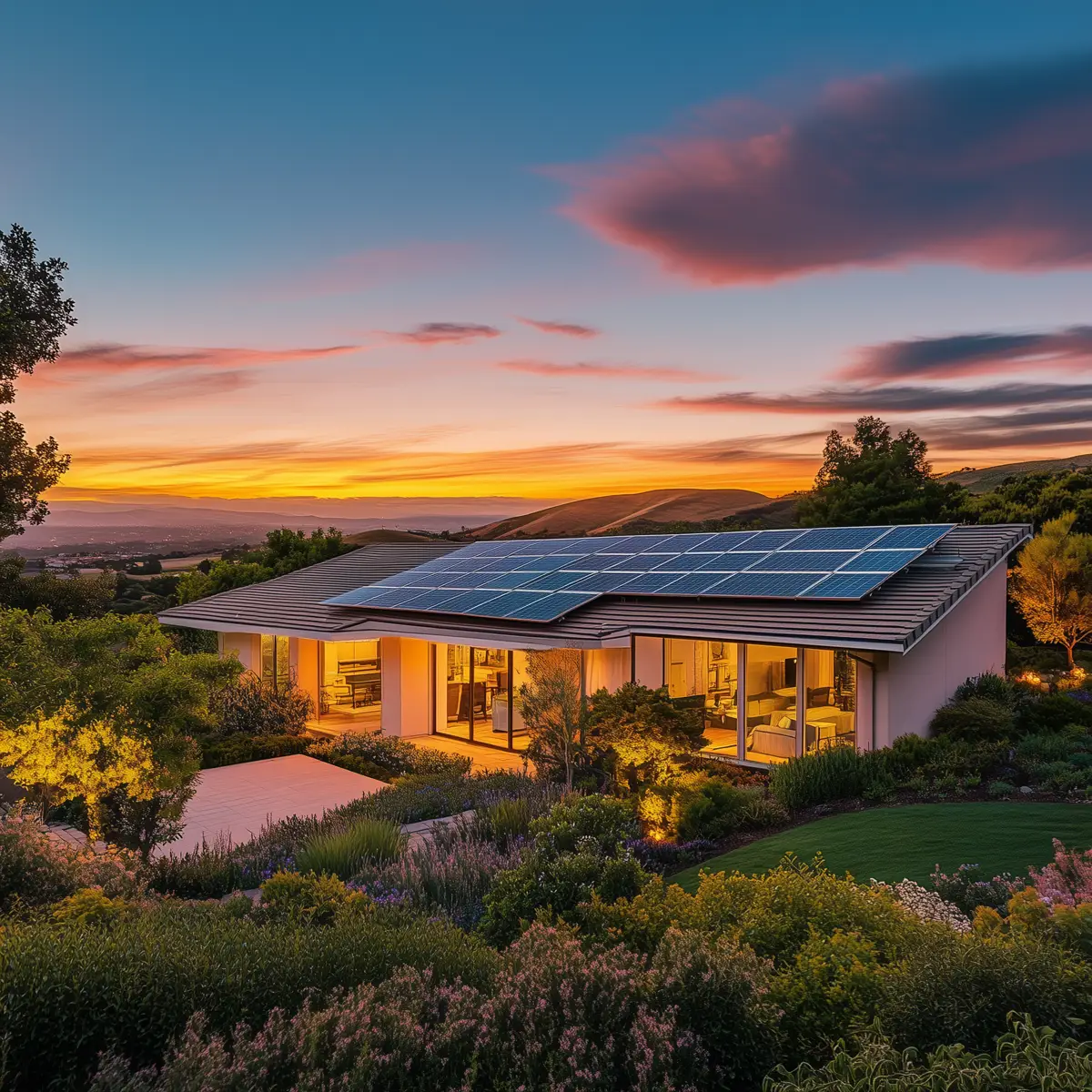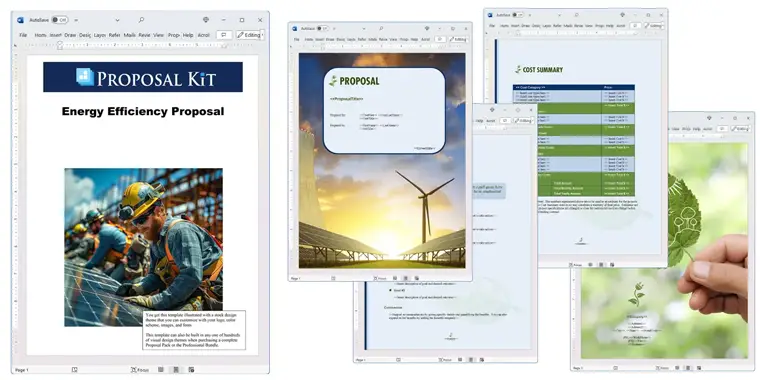How to write your Energy Efficiency Proposal
We include this 16 page layout with every Proposal Pack. If you want this template to have a different visual design theme than the one illustrated here, purchase any Proposal Pack design and create this template using the purchased design theme. This template is included in every Proposal Pack. If you get a Proposal Pack or the Professional Bundle, you can also make any variation of this template with different chapters to suit your needs.
We typically include more chapters in the templates than most people will need to give everyone more variety in the chapters they may need. You can trim down a long template by removing pages you do not need or combining multiple chapter topics into one page.
 DOWNLOADABLE, ONE-TIME COST, NO SUBSCRIPTION FEES
DOWNLOADABLE, ONE-TIME COST, NO SUBSCRIPTION FEES![]() View Energy Efficiency Sample Proposal
View Energy Efficiency Sample Proposal
This sample proposal is based on the same layout as this template and is included in every Proposal Pack. The visual design of the templates will match whichever Proposal Pack design you purchase. To get this template in a different design theme than shown in the sample, purchase any other Proposal Pack design theme and this template will be included.
You can create an editable Word version of this sample in any design theme of your choice including branded to your logo.
 If you need this template on DVD media order from our Amazon shop.
If you need this template on DVD media order from our Amazon shop.
You can also create countless variations of this document to suit your needs using the included library of 2200+ chapters if ordering a Proposal Pack or Pro Bundle.
 What Our Clients Say
What Our Clients SayVery pleased with the purchase by the way - helpful software."
Related Article
Related Video
Related Templates
- Office Renovation Proposal
- Civil Engineering Construction Project Proposal
- Solar Power System Sales and Installation Proposal
- Home Construction Proposal
- Retrofit Project Proposal
- Commercial LED Lighting Product Sales Proposal
- 3D Printed Building Construction Proposal
- Environmental Program Proposal
- Solar Power System Grid and Storage Proposal
- Energy Efficiency Grant Project Proposal
- Civil Engineering Project Proposal
- Sustainable Energy Production Facility Proposal
- Lighting Design and Installation Services Proposal
- Sustainable Power for Eco Resort Proposal
- HVAC Proposal Template
- Product Cost Savings Sales Proposal
- Lighting Contractor Product and Service Sales Proposal
- Commercial Contracting Office Remodel Proposal
What's the Best Way to Write Your Energy Efficiency Proposal?
The most effective approach to writing an energy efficiency proposal is using the Proposal Kit template and software package. This comprehensive tool streamlines the proposal creation process, ensuring your document is professional, persuasive, and perfectly aligned with the project's requirements. Proposal Kit's templates and the Wizard software program are designed to guide users unfamiliar with proposal writing through every step, including a line item quoting database system for detailed financial management.
Are you currently facing the challenge of drafting an energy efficiency proposal for your business or organization?
What Types of Projects Are Energy Efficiency Proposals Written For?
Energy efficiency projects are diverse, each tailored to specific needs and goals. Here are ten common types of projects that might be included in an energy efficiency proposal:
- Retrofitting Buildings to improve insulation and reduce energy leakage.
- Installing Solar Panels on commercial or residential properties to harness renewable energy.
- Upgrading HVAC Systems for better energy efficiency and lower operational costs.
- Implementing LED lighting across facilities to cut down on electricity use.
- Developing Smart Grid Technologies to optimize energy distribution and usage.
- Creating Energy Monitoring Systems that provide real-time data on energy consumption.
- Constructing Green Roofs that provide natural insulation and reduce building heat loss.
- Establishing Water Recycling Systems to decrease water waste and energy used in water heating.
- Enhancing Window Glazing improves winter heat retention and keeps summer interiors cool.
- Educating and Training Staff on energy conservation practices to encourage sustainable building practices.
Chapters this template is built with
Every energy efficiency proposal created with Proposal Kit is built from several key chapters, each serving a unique purpose to keep your proposals structured and on track.
Each component plays a vital role in constructing a comprehensive energy efficiency proposal using the Proposal Kit, ensuring that all aspects of the project are clearly presented and professionally documented.
These chapters are just a small selection of the extensive template library available in Proposal Kit. Each template is a customizable Word document that can be edited and saved as a PDF for easy distribution.
Cover Letter
The Cover Letter serves as the formal introduction to your organization and sets the stage for the proposal. It should briefly introduce your company, highlight the specific goals of the energy efficiency project, and explain why you are approaching the potential funder or stakeholder. This letter must make a solid first impression, detailing your commitment to sustainability and how this project aligns with the recipient's values or investment priorities.
Client Summary
The Client Summary provides a comprehensive overview of the client's needs and how your proposal directly addresses these needs. This section should detail the client's current energy consumption and efficiency challenges and clearly articulate how the proposed solutions will resolve these issues. It is essential to demonstrate a deep understanding of the client's operations and tailor the energy solutions to match their specific circumstances and goals.
Cost Summary
The Cost Summary outlines all projected costs associated with the energy efficiency project, including initial outlays for equipment and installation, disruptions to operations, and ongoing maintenance costs. Supported by Proposal Kit's line item quoting feature, this section allows for transparent and detailed financial planning, making it easier for stakeholders to understand the investment required and the financial handling of the project.
Upgrades
This section details the specific energy-saving upgrades planned for the project, such as installing new HVAC systems, solar panels, or energy-efficient lighting. Each upgrade should be described regarding its expected impact on energy consumption, the technology involved, and how it fits into the facility's overall energy management strategy.
Regulations
Discuss the relevant energy efficiency standards and regulatory compliance requirements that affect the project. This might include local, state, or federal regulations governing energy use and industry-specific standards. Knowledge of these regulations and how the project will comply is crucial for gaining approval and funding.
Eco-Friendly
Highlight the environmental benefits of the project in the Eco-Friendly section. Discuss how the project will reduce emissions, lower energy consumption, and contribute to sustainability goals. This section should align the project's outcomes with broader environmental objectives, appealing to stakeholders interested in green investments.
Efficiency
Analyze the expected efficiency improvements that the project will bring. Quantify the anticipated reductions in energy use and improvements in operational efficiency, providing data and projections to back up these claims. This analysis not only supports the project's viability but also its long-term benefits in terms of sustainability.
Cost Savings
Project the cost savings over time due to reduced energy consumption. Illustrate how initial investments will pay off in the long run through lower utility bills, tax incentives, and potential grants. This financial projection can be a persuasive element of the proposal, showcasing the economic and environmental return on investment.
About Us
The About Us section details your company's qualifications, including expertise in energy efficiency projects and previous successes. Highlight your team's credentials, experience, and any unique capabilities that set you apart from competitors. Include case studies or testimonials from past projects to build trust and credibility.
Products
Describe any specific products used in the project, emphasizing their energy efficiency ratings and compliance with industry standards. This can include anything from high-efficiency boilers to smart thermostats. Detailing the choice of products underscores your commitment to quality and efficiency.
Comparison Chart
Use a Comparison Chart to compare the proposed solutions with alternatives visually. Considering cost, efficiency, and durability can help clarify why your proposed approach is superior. Such comparisons can be crucial in convincing stakeholders of the merits of your proposal over competing options.
Facilities
Provide a detailed description of the facilities involved in the project, outlining how they will be modified or used to achieve the project's energy efficiency goals. This section should include floor plans, existing energy usage statistics, and illustrations of proposed changes to facilitate understanding of the project's scope and impact.
Awards and Achievements
List any relevant awards or recognitions that your company or the proposed products have received that enhance the credibility of your proposal. This could include industry awards, environmental certifications, or recognitions from reputable organizations. These accolades serve as third-party validation of your expertise and commitment to quality and sustainability.
Use cases for this template
Alex's Eco-Innovation
Alex, the owner of EcoBuild Ventures, was looking to make his mark in the green remodeling industry. Recognizing the growing demand for sustainable building solutions, Alex used Proposal Kit to create an energy-efficient building and housing proposal that perfectly encapsulated the benefits of modern, energy-efficient technologies.
His proposal went beyond technical specifications; it painted a picture of the potential energy savings and enhanced comfort retrofitting could bring to older buildings. Alex included detailed case studies and predictive energy models to demonstrate how these upgrades could align with the latest energy efficiency standards and significantly cut costs.
The proposal was rich in data yet easy to understand, showcasing Alex's understanding of his client's needs and environmental sustainability.
Jamie's Deadline Success
Jamie, an operations manager at Efficiency First Solutions, was under pressure with only a week to draft a comprehensive proposal for a large-scale commercial retrofit project. The challenge was immense, requiring an in-depth analysis of technical details and financial justifications.
Jamie turned to Proposal Kit, leveraging its structured templates to organize her thoughts and data efficiently. She supplemented this with AI technology to sift through extensive databases of past projects, pulling out relevant statistics, trends, and benchmarks. The AI helped consolidate this information into clear, impactful insights that Jamie could incorporate directly into her proposal.
The combination of Proposal Kit's clear layout and AI's analytical prowess enabled Jamie to produce a polished, persuasive proposal under a tight deadline.
Casey's Non-Profit Impact
Casey, the director of Green Future, was tasked with a project-drafting an RFP for outsourcing several energy conservation initiatives. The projects ranged from installing solar panels in community centers to retrofitting schools with energy-efficient lighting. Understanding the critical nature of these initiatives, Casey chose the Proposal Kit to ensure her RFP was as clear and detailed as possible.
The software helped her outline each project's scope, deliverables, and timelines, making it easy for potential contractors to understand the nonprofit's expectations and goals. She included:
- Sections on sustainability goals.
- Seeking partners who have the technical skills.
- Shared the nonprofit's commitment to environmental stewardship.
The structured and detailed RFP resulted in a competitive bidding process, attracting many proposals from capable firms eager to align with such a well-defined and mission-driven project.
Casey's use of the Proposal Kit facilitated a seamless selection process, successfully implementing critical energy-saving projects that significantly enhanced the community's sustainability efforts.
Conclusions and Recommendations
Proposal Kit's comprehensive templates and tools provide a structured approach to tackling the various components of an energy efficiency proposal, from detailing cost summaries and energy-saving benefits to adhering to energy efficiency standards. By guiding users through each step, from drafting to submission, Proposal Kit helps transform a challenging task into a manageable process, yielding professional results that meet stakeholders' expectations.
Also Known As
This template may also be referred to in different ways or be used in more specialized situations, such as:
- Proposal for Enhancing Energy Efficiency
- Energy Conservation Proposal
- Proposal for Sustainable Energy Solutions
- Energy Efficiency Improvement Proposal
- Proposal for Energy Saving Initiatives
- Sustainable Energy Management Proposal
- Proposal for Reducing Energy Consumption
- Energy Efficiency Upgrade Proposal
- Proposal for Implementing Energy Efficient Practices
- Energy Optimization Proposal
Abstract
 Creating an energy efficiency proposal is vital for communicating the benefits of energy-saving initiatives. Investing in energy efficiency not only reduces greenhouse gas emissions and carbon dioxide emissions but also enhances energy performance and provides a quick break even point for projects. The Proposal Kit software offers a robust foundation for developing energy efficiency projects through its structured templates, simplifying the otherwise time-consuming process. These templates guide users in their efforts to promote energy efficiency, providing key performance indicators and technical data to potential clients and consumers.
Creating an energy efficiency proposal is vital for communicating the benefits of energy-saving initiatives. Investing in energy efficiency not only reduces greenhouse gas emissions and carbon dioxide emissions but also enhances energy performance and provides a quick break even point for projects. The Proposal Kit software offers a robust foundation for developing energy efficiency projects through its structured templates, simplifying the otherwise time-consuming process. These templates guide users in their efforts to promote energy efficiency, providing key performance indicators and technical data to potential clients and consumers.
Energy efficiency proposals cover a diverse range of projects, such as retrofitting buildings, installing solar panels, and upgrading HVAC systems. These proposals aim to raise awareness about the environmental impacts and affordability of sustainable energy solutions. By conducting thorough energy audits and outlining general project scope, businesses can demonstrate their commitment to efficiency levels and secure utility rebates for their initiatives. Moreover, replacing old technology with energy-efficient alternatives further underscores a company's dedication to sustainability, with a reputation that speaks volumes to both past and future clients.
Government agencies and policymakers often look for proposals that outline a clear payback period and highlight the benefits of energy efficiency investments. When writing a proposal, it is important to note the significant environmental impacts and cost savings involved in energy generation and supply. A well-organized executive summary, paired with separate sections on regulations and eco-friendly practices, can simplify the decision-making process for stakeholders.
 By using Proposal Kit's templates, companies can streamline the development and implementation of energy optimization projects, ensuring that good planning lays the foundation for success. This method not only attracts potential clients but also enhances a company's life and reputation in the green building industry.
By using Proposal Kit's templates, companies can streamline the development and implementation of energy optimization projects, ensuring that good planning lays the foundation for success. This method not only attracts potential clients but also enhances a company's life and reputation in the green building industry.
Energy efficiency proposals offer an avenue for organizations to align with sustainability goals while addressing financial and operational challenges. The pursuit of energy efficiency investments is a testament to a company's dedication to reducing environmental impacts and optimizing resources. By focusing on key areas, such as replacing outdated fixtures with advanced lighting solutions, businesses can achieve significant reductions in electricity consumption and carbon dioxide emissions, which are critical components in today's eco-conscious markets.
The integration of natural gas and other renewable energy sources in energy generation further exemplifies the forward-thinking approach necessary for winning proposals. Companies are increasingly aware of the importance of technical data and key performance indicators that not only quantify efficiency levels but also demonstrate a quick break-even point. This data-driven approach aids in the creation of detailed cost summaries and facilitates a clear discussion about the payback period. Moreover, utility rebates play an important role in offsetting initial costs, making these projects increasingly attractive and accessible to a wider audience.
 Proposal Kit's extensive library supports users in addressing important points such as good planning and the implementation of energy-efficient practices. By providing separate templates for each part of the proposal, users can focus on specific areas like warehouse optimization or office efficiency, ensuring that every detail is accounted for. Visual aids, such as comparison charts, enhance understanding and help convey the benefits of proposed solutions compared to other options.
Proposal Kit's extensive library supports users in addressing important points such as good planning and the implementation of energy-efficient practices. By providing separate templates for each part of the proposal, users can focus on specific areas like warehouse optimization or office efficiency, ensuring that every detail is accounted for. Visual aids, such as comparison charts, enhance understanding and help convey the benefits of proposed solutions compared to other options.
With an eye on affordability, the Proposal Kit helps businesses outline their supply and material needs, ensuring that allocated budgets are adhered to over the project's life. The inclusion of case studies and testimonials from past clients strengthens the proposal, showcasing a reputation that speaks volumes. Moreover, the software allows users to create an executive summary that succinctly captures the essence of their proposal, making it an invaluable tool for potential clients who are seeking well-defined, mission-driven energy efficiency initiatives.
Where sustainability is paramount, proposal development becomes a methodical process supported by research and a deep understanding of consumer needs. By addressing both policymakers and customers, businesses can create proposals that not only appeal to government agencies but also resonate with the broader public. This holistic approach ensures that energy efficiency is not just a goal but a viable and beneficial reality for all stakeholders involved.
Frequently Asked Questions
Why are energy efficiency proposals important and what should be included in them?
An energy efficiency proposal, a document that relies on your expertise and involvement, should include the following key elements: an engaging cover letter, an overview of the current energy consumption, a detailed description of the proposed energy efficiency measures, the benefits of these measures (both environmental and financial), a project timeline, a budget or cost estimate, and contact information. Using structured templates from Proposal Kit can help ensure all critical components are covered, and your unique insights are effectively communicated.
How can I convey the benefits of energy efficiency measures in my proposal?
To effectively convey the benefits of energy efficiency measures, highlight the environmental and financial advantages. Use data to show potential energy savings, cost reductions, and the return on investment. Include case studies or examples from similar projects and explain how the proposed measures align with sustainability goals and regulatory requirements. Visual aids like charts and graphs can also help illustrate the benefits.
What are some mistakes to avoid when writing an energy efficiency proposal?
Common mistakes include failing to tailor the proposal to the specific audience, not clearly outlining the benefits, using technical jargon that may not be familiar to the reader, and submitting a proposal with errors or poor formatting. Ensure that your proposal is clear, concise, and professionally presented. Using Proposal Kit's templates can help you avoid these pitfalls and present a polished proposal.
How can I make my energy efficiency proposal stand out?
To make your proposal stand out, write a compelling narrative that highlights the unique aspects of your energy efficiency project. Include detailed data and projections, provide visual aids like charts and graphs, and offer customized solutions that address the specific needs and goals of the recipient. A well-organized and visually appealing design will also help capture the reader's attention.
How can I use the Proposal Kit to create an effective energy efficiency proposal?
Proposal Kit provides a comprehensive library of templates designed to help you create professional and effective proposals. To create an energy efficiency proposal, select a template that fits your needs, customize it with relevant details about your project and the proposed measures, and follow the structured format to ensure all critical elements are included. Proposal Kit's templates guide you through the process, making it easier to present a polished and persuasive proposal.
15% Off Discount
![]() Add To Cart This Word Template Only
Add To Cart This Word Template Only
 Add To Cart Proposal Pack Resources #3
Add To Cart Proposal Pack Resources #3
 Add To Cart Proposal Kit Professional Bundle
Add To Cart Proposal Kit Professional Bundle
 4.7 stars, based on 846 reviews
4.7 stars, based on 846 reviewsProposal Kit chapters used in this template
Cover Letter, Title Page, Table of Contents, Client Summary, Facilities, Upgrades, Products, Eco-Friendly, Comparison Chart, Efficiency, Cost Savings, Regulations, Cost Summary, About Us, Awards and Achievements, Back Page
Included Calculator Spreadheets
These Excel calculator spreadsheets are included with this template. If you purchase a Proposal Pack or the Professional Bundle, these proposal pages are generated using an automated line-item database in the included Wizard software. The calculator spreadsheets are intended for use when purchasing only the static Word template.
You use this proposal for
- General business proposal
- Non-technical proposal
- Service sales proposal
- Project pitch proposal
- Construction, contracting, building proposal
- Nature, environmental proposal
- Energy proposal
How to create this template with Proposal Pack Wizard
You can create this document using any of the logo-designed Proposal Packs. Pick any Proposal Pack with a logo design theme you like best; they will all work equally well. The Proposal Pack for Any Business is the pack with no extra added logos or colors - designed to be used plain or for you to customize with your logos and graphics.
The Proposal Pack design theme you purchase will determine the visual look of this template. The screenshot above only shows the plain generic design theme. Names and stories in examples are fictional; however, the templates are from real client use cases.
We include a library of chapters to be assembled based on your needs. All proposals are different and have different needs and goals. We designed Proposal Pack so you can customize the documents to suit your needs.
You will best create this document using the Proposal Pack Wizard - Expert Edition software to select this template and build it in the Proposal Pack logo design theme of your choice along with any desired customizations (such as adding additional chapters, removing unneeded chapters, changing the order of chapters, and importing your company logo). This template outlines a proposal for the described situation. Each user is responsible for typing in the actual content of the provided pages with their information to complete the proposal. Suggestions in the abstract may include features in higher-end packages and are facilitated by the selection of chapter templates to support the narrative of each proposal, which help guide the user in filling in the details.
You create this template using the Wizard software with an entire Proposal Pack library and software. We include the Expert Edition of the software in the Proposal Kit Professional bundle. Microsoft Word for Windows is required to use the customizing software. You can also edit Word document templates in other office software such as Word for Mac. We will assist Mac users in assembling complex templates for their first project if they do not have the required platform to run the Wizard software.
You only get the single assembled Word document if purchased as a stand-alone template. The individual template products include no other templates, samples, or software.
How to Build Templates Featured on Proposal Kit Website
Many people find the Proposal Kit website after searching for a specific proposal. Once you've purchased and installed the software, how do you build that template you found in the first place? This video shows you how to build any proposal you see on the Proposal Kit website.
Key Takeaways
- The Energy Efficiency Proposal is available as a ready-to-edit template.
- You can create unlimited custom variations of this template using a Proposal Pack or the Professional Bundle.
- Using a Proposal Pack or Professional Bundle, you can automate quotes and other financial pages with a line-item database.
- There are no ongoing subscription fees. You get lifetime unlimited use.
- We made Proposal Kit for freelancers, small businesses, and non-profits.
- Proposal Kit product content (templates, samples, software) is 100% written by humans.
 Ian Lauder has been helping businesses write their proposals and contracts for two decades. Ian is the owner and founder of Proposal Kit, one of the original sources of business proposal and contract software products started in 1997.
Ian Lauder has been helping businesses write their proposals and contracts for two decades. Ian is the owner and founder of Proposal Kit, one of the original sources of business proposal and contract software products started in 1997.By Ian Lauder
 Published by Proposal Kit, Inc.
Published by Proposal Kit, Inc.


 Cart
Cart


 Get 15% off ordering today:
Get 15% off ordering today: 

 Facebook
Facebook YouTube
YouTube X
X Search Site
Search Site